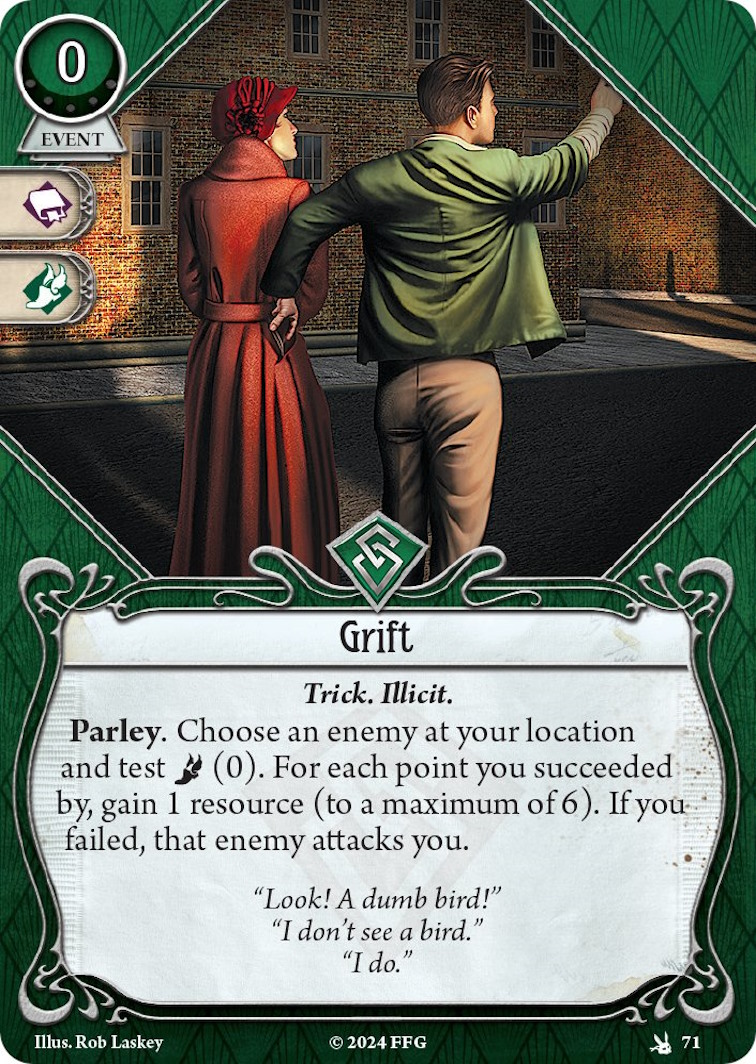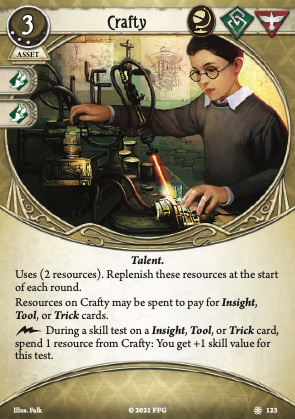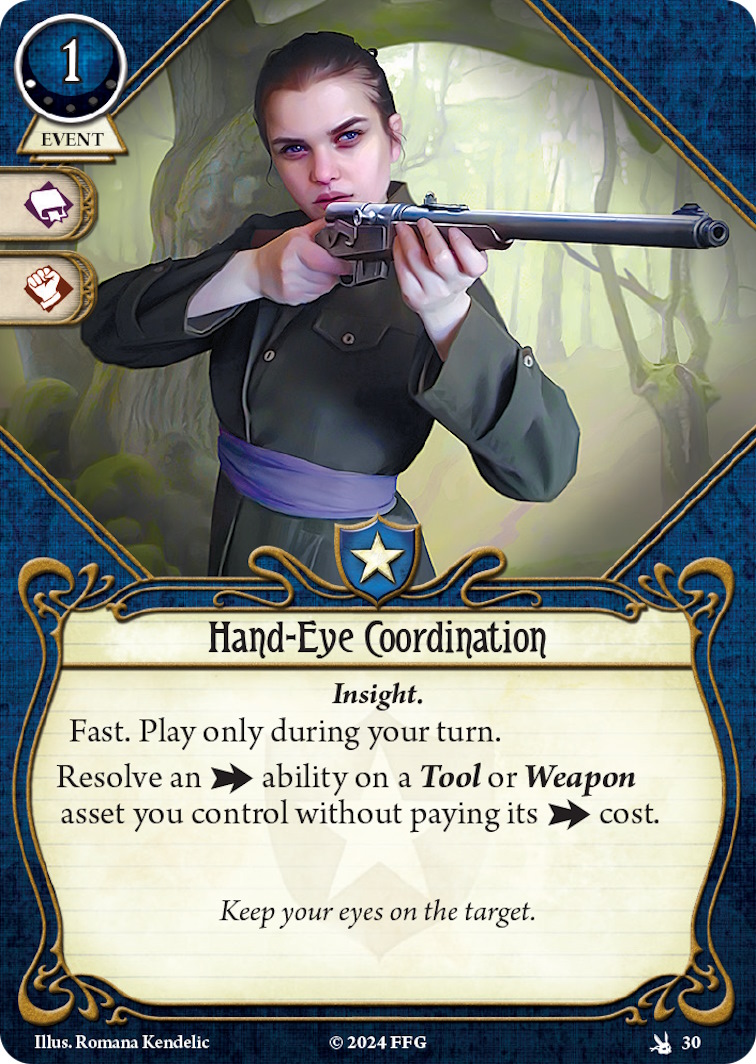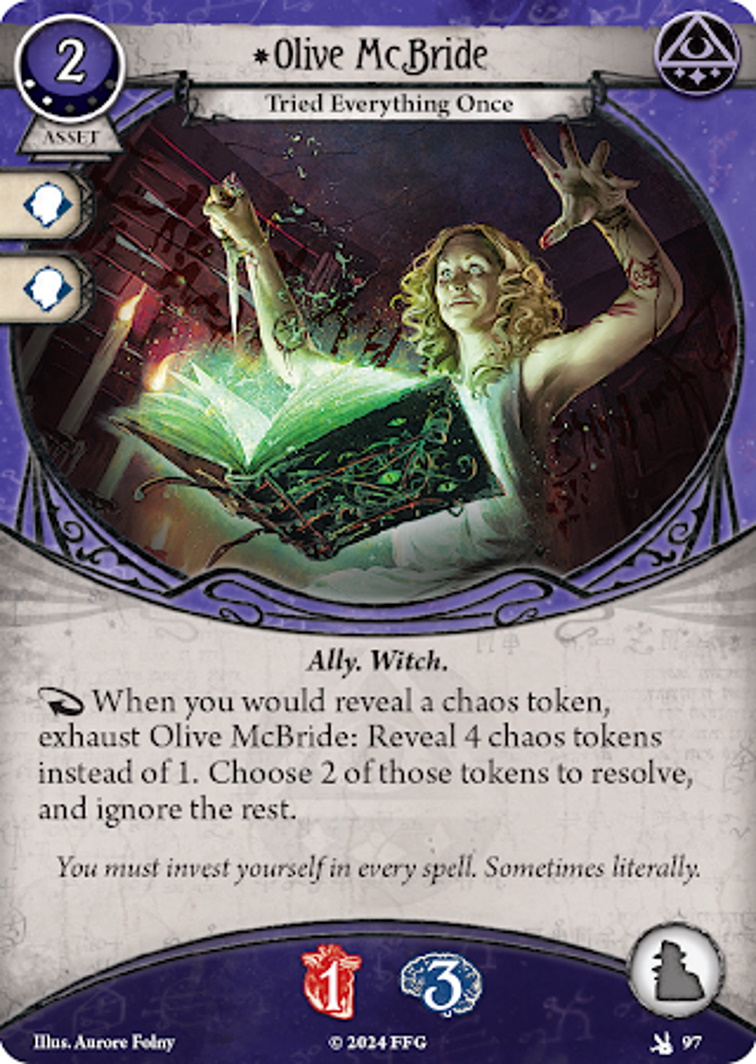
I love this card!
On the surface it's just another green economy card, with stipulations and risk factors that make it hard for it to compete with the likes of Faustian Bargain. However, when used as a combo piece, this card can be incredibly clutch. First of all it's a trick that requires the presence of an enemy. This makes it a perfect target for Bewitching.
The real beauty of this card however, is in combination with the many "succeed by" skills. Both within the rogue class itself, and elsewhere. Need to take out an Acolyte? Just commit a copy of Momentum to your Grift to get one extra resource (assuming you succeed and wouldn't already have done so by 6). And as long as you succeed by at least 3, you'll be fighting that Acolyte at 0 difficulty. And because Grift is a parley, there is no attack of opportunity.
I love pairing Grift with cards like Nimble, Purified and Lucky Cigarette Case for big value plays.
Other great synergies include: Opportunist, "Watch this!", All In, and Manual Dexterity.
And if you're playing without the taboo list, adding a Double or Nothing to any of the aforementioned combos is a great way to make 100% certain you will draw an auto-fail token. Jokes aside this card goes crazy with Double or Nothing and it is a very fun time as long as you don't make a habit of abusing it.




